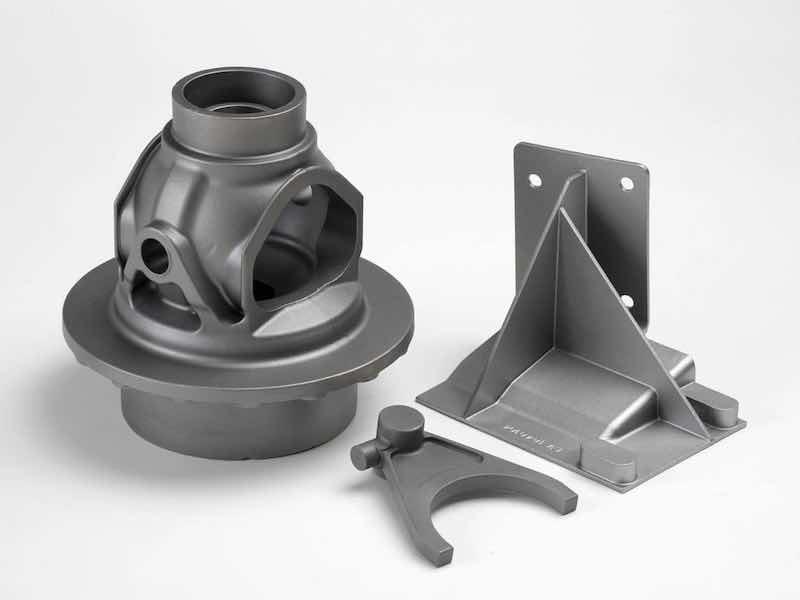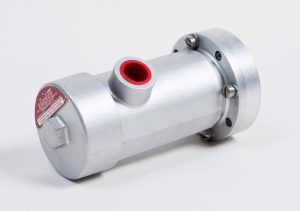The commitment of Wisconsin Aluminum Foundry to excellence
Exploring the Versatile Uses and Applications of Aluminum Castings in Modern Industries
Aluminum spreadings have actually become integral to various modern industries due to their unique properties. They provide significant advantages in weight decrease, thermal conductivity, and deterioration resistance. From auto technologies to applications in durable goods and building and construction, their convenience is impressive. Yet, real degree of their effect prolongs past instant benefits, meaning more comprehensive ramifications for sustainability and effectiveness. What lies ahead for light weight aluminum castings in an ever-evolving commercial landscape?
Automotive Industry Innovations
The vehicle industry has significantly welcomed light weight aluminum spreadings to enhance car efficiency and efficiency. By utilizing light weight aluminum, producers can produce lighter components, which add to boosted fuel economic climate and decreased emissions. Secret applications include engine blocks, transmission instances, and structural components, where the material's strength-to-weight proportion provides resilience without including excess weight.
Aluminum spreadings also provide remarkable thermal conductivity, which helps in far better warm dissipation, consequently boosting engine performance. Improvements in casting technologies, such as die casting and sand spreading, make it possible for the production of complicated geometries, enabling for cutting-edge designs that enhance room and functionality.
The recyclability of aluminum straightens with sustainability objectives in the vehicle field, promoting ecologically pleasant techniques. As the industry remains to innovate, the usage of aluminum castings is likely to broaden, driving additional innovations in vehicle style and effectiveness.
Aerospace Advancements and applications
While the aerospace industry continues to prioritize weight reduction and fuel performance, light weight aluminum spreadings have actually emerged as a vital product option for numerous applications. Their light-weight nature, coupled with high strength-to-weight ratios, enables substantial improvements in airplane performance and effectiveness. Light weight aluminum castings are frequently made use of in structural elements, such as body frames and wing parts, where minimizing weight is crucial.
Recent advancements in light weight aluminum spreading modern technologies, consisting of improved alloy solutions and accuracy casting techniques, have actually further boosted the product's performance capacities. These technologies allow the production of intricate geometries and intricate layouts while maintaining architectural honesty. Furthermore, aluminum's excellent rust resistance guarantees longevity and integrity in extreme aerospace atmospheres.
As the aerospace field progressively welcomes sustainability, light weight aluminum spreadings supply a recyclable service that lines up with environmentally friendly methods, making them an essential element in the advancement of next-generation aircraft.
Customer Goods and Everyday Products
As consumers progressively look for lightweight yet resilient products for everyday products, aluminum castings have actually gained appeal in numerous durable goods. The distinct properties of aluminum, including its resistance to deterioration and excellent thermal conductivity, make it a suitable option for things like pots and pans, house appliances, and outside equipment. For example, aluminum cast frying pans and pots give even heat distribution, improving cooking performance. In addition, making use of aluminum in things such as bicycle frames and travel luggage guarantees a balance in between strength and transportability. Suppliers value aluminum castings for their convenience, as they can be easily formed into complex shapes while preserving architectural honesty. The ability to reuse light weight aluminum without weakening its properties aligns with expanding customer preferences for sustainable products. Overall, aluminum spreadings are important to the manufacturing of resilient, functional, and aesthetically pleasing durable goods, fulfilling the needs of modern way of livings.
Building And Construction and Architectural Utilizes
Aluminum spreadings have actually ended up being an important component in building and construction and architectural design, specifically because of their stamina and lightweight nature. These buildings make light weight aluminum an excellent selection for numerous applications, consisting of structural components, facades, and decorative functions - Metal Castings. Builders and designers increasingly make use of aluminum spreadings for window frameworks, doors, and roof, enhancing both functionality and aesthetics. The material's resistance to rust additionally extends its life expectancy, decreasing maintenance expenses and guaranteeing longevity in diverse ecological conditions
Additionally, aluminum can be quickly built into detailed styles, permitting innovative building expressions. Its convenience assists in the creation of custom-made pieces that fulfill details design requirements, from elaborate barriers to intricate supports. As sustainability becomes a concern, aluminum's recyclability contributes to its charm in green building practices. In general, aluminum castings are reinventing the construction sector by providing lightweight, durable, and visually appealing solutions.
Electric and Digital Elements
Light weight aluminum spreadings play a crucial duty in the manufacturing of lightweight electrical rooms, which enhance portability and efficiency in various applications. In addition, their excellent thermal conductivity makes them ideal for warm sinks, ensuring peak performance and long life of digital components. Light weight aluminum's conductive buildings add to its use in different electric conductors, highlighting its significance in modern innovation.
Lightweight Electric Rooms
Lightweight electric rooms play an important role in shielding sensitive digital elements from environmental factors and physical damages. Built from aluminum spreadings, these enclosures are valued for their strength-to-weight proportion, making them perfect for numerous applications across markets. Their lightweight nature help in reducing total system weight, which is important in mobile and portable electronic devices. Light weight aluminum's corrosion resistance boosts longevity, expanding the lifespan of the encased components. The capability to mold light weight aluminum right into complex shapes enables tailored designs, providing to particular requirements while making sure reliable warm dissipation. In addition, these enclosures can be quickly incorporated right into existing systems, providing versatility and convenience in modern technical atmospheres. On the whole, lightweight aluminum rooms considerably add to the performance of digital devices.
Heat Sinks and Conductors
While many materials are made use of in digital parts, aluminum spreadings attract attention for their effectiveness in heat management as warm sinks and conductors. Their exceptional thermal conductivity enables reliable warmth dissipation, which is vital in avoiding the overheating of electronic devices. Aluminum's lightweight nature additionally improves its viability for applications where weight is a considerable variable, such as in aerospace and automotive industries. Additionally, light weight aluminum spreadings can be easily molded into complex shapes, providing layout adaptability for maximizing thermal efficiency. The rust resistance of aluminum additionally adds to the durability and dependability of these elements in various environments. As modern technology breakthroughs and tools end up being much more compact, the need for reliable warm management solutions, like light weight aluminum castings, remains to expand.
Marine Industry Utilization
The aquatic market increasingly relies upon light weight aluminum castings for their outstanding toughness and rust resistance. These residential or commercial properties make aluminum an excellent option for various applications, consisting of boat hulls, engine components, and aquatic hardware. The light-weight nature of aluminum spreadings allows improved fuel effectiveness and simpler ability to move in watercraft, which is crucial for both leisure and business vessels.

Light weight aluminum castings also provide substantial expense advantages as a result of their lengthy life-span and low upkeep requirements, decreasing the total operational expenses resource for aquatic operators. Additionally, the versatility of aluminum permits complex designs that can satisfy particular efficiency needs.
Manufacturers in the aquatic sector make use of advanced spreading techniques to create complex shapes, ensuring that elements fulfill extensive safety and security and performance criteria. As the demand for high-performance marine vessels expands, light weight aluminum castings are positioned as a vital material in boosting the functionality and durability of aquatic equipment.
Sustainability and Recycling in Aluminum Casting

Light Weight Aluminum Recycling Process
Recycling aluminum plays a crucial role in decreasing environmental influence and saving sources within the spreading industry. The light weight aluminum reusing procedure begins with the collection of scrap light weight aluminum, which can consist of old components, producing waste, and post-consumer items. This scrap is after that sorted, cleaned, and shredded into tiny pieces to assist in melting.
As soon as prepared, the aluminum scrap is melted in a heating system at reduced temperature levels than primary aluminum production, substantially reducing energy usage. The liquified light weight aluminum is after that cast right into ingots or various other shapes for reuse in various applications - Wisconsin Aluminum Foundry. This closed-loop system permits for the reliable recuperation of light weight aluminum, preserving its residential properties while minimizing the requirement for virgin materials. Subsequently, the reusing procedure is a crucial element of lasting techniques in light weight aluminum spreading
Ecological Benefits
While aluminum casting plays an essential role in various industries, its ecological advantages are specifically remarkable regarding sustainability and source preservation. The lightweight nature of aluminum contributes to power performance in transport, reducing fuel intake and exhausts. Furthermore, aluminum casting promotes making use of recycled materials, significantly lowering the energy needed for production compared to key light weight aluminum. This recycling procedure lessens waste and reduces the environmental influence related to mining and refining basic materials. Light weight aluminum is 100% recyclable without degradation of its properties, advertising a sustainable lifecycle. By picking aluminum spreading, markets can greatly lower their carbon footprint while advertising resource performance, making it a vital option in the pursuit of eco friendly production practices.
Closed-Loop Solutions

Often Asked Concerns
What Are the Secret Advantages of Aluminum Castings Over Other Materials?
Aluminum castings use light-weight residential properties, superb corrosion resistance, and high strength-to-weight ratios. They can be easily molded into intricate shapes, offer great thermal and electric conductivity, and are cost-effective, making them more suitable over lots of alternate products.
Exactly how Is the Aluminum Casting Process Environmentally Friendly?
The aluminum spreading procedure is eco pleasant as a result of its recyclability, reduced power intake, and lowered waste manufacturing. Its capacity to make use of recycled products decreases the carbon impact, advertising sustainability within making techniques.
What Prevail Obstacles in Light Weight Aluminum Spreading Production?
Typical challenges in aluminum spreading manufacturing consist of preserving dimensional accuracy, managing thermal tightening, protecting against issues like porosity and incorporations, making sure appropriate mold design, and optimizing manufacturing effectiveness while lessening material waste and environmental influence.
Exactly How Do Aluminum Castings Contrast in Expense With Other Manufacturing Methods?
Light weight aluminum castings typically supply affordable expenses compared to various other producing techniques, particularly for tool to high-volume manufacturing. Their reduced preliminary tooling expenditures and reliable material usage can lead to desirable business economics in time.
What Future Trends Are Anticipated in Aluminum Spreading Innovation?
Future fads in light weight aluminum casting innovation are anticipated to include advancements in automation, enhanced alloy compositions, boosted recycling techniques, and the integration of 3D printing, all targeted at enhancing performance, decreasing prices, and decreasing environmental influence.
Recent innovations in aluminum casting modern technologies, including boosted alloy formulations and accuracy spreading techniques, have actually even more boosted the material's performance capacities. Aluminum castings have actually come to be a vital part in construction and building design, especially due to their toughness and light-weight nature. The aluminum recycling procedure starts with the collection of scrap light weight aluminum, which can include old components, producing waste, and post-consumer products. Once prepared, the aluminum scrap is thawed in a heater at reduced temperatures than main aluminum manufacturing, greatly lowering energy usage. Furthermore, aluminum casting promotes the use of recycled products, substantially decreasing the power needed for manufacturing contrasted to key light weight aluminum.